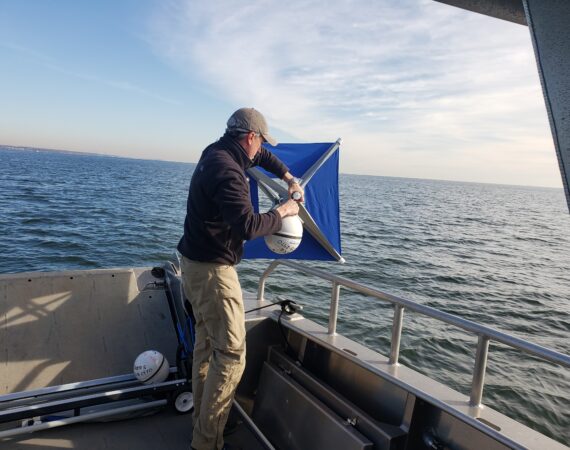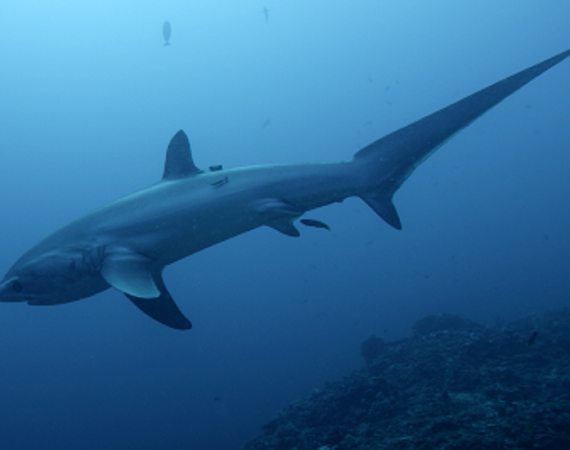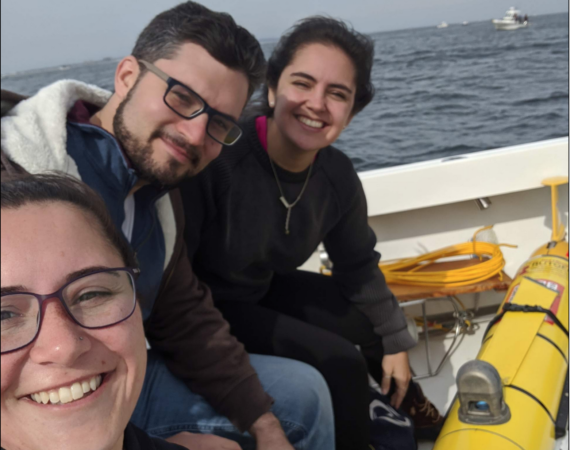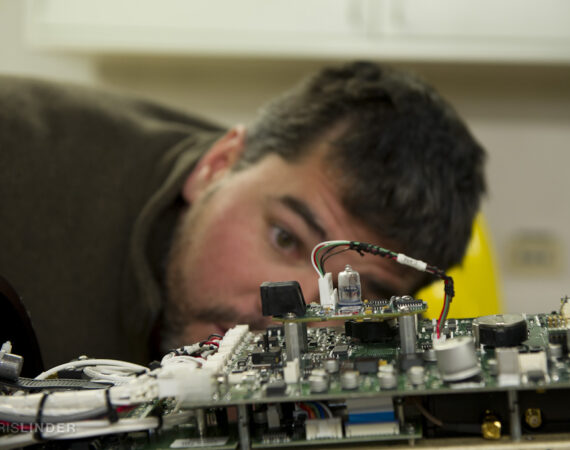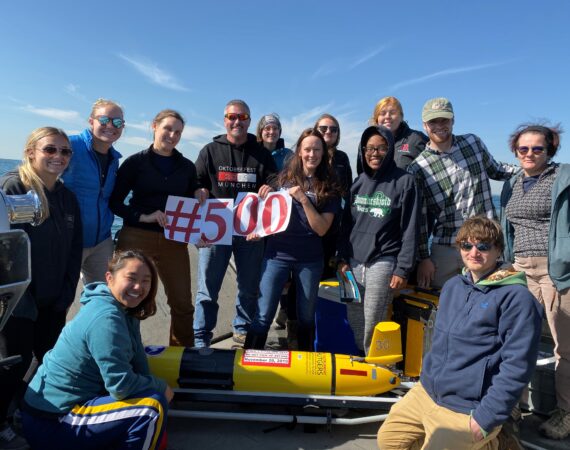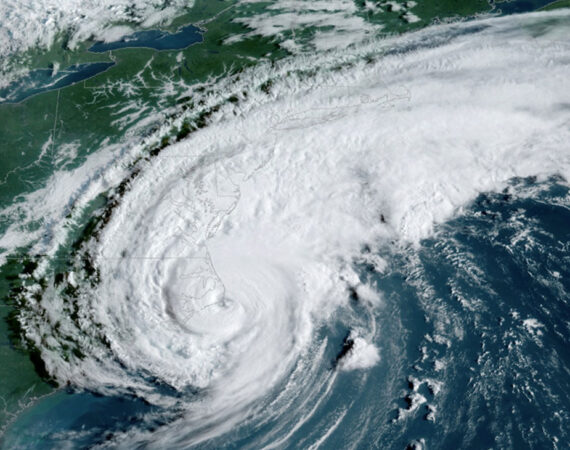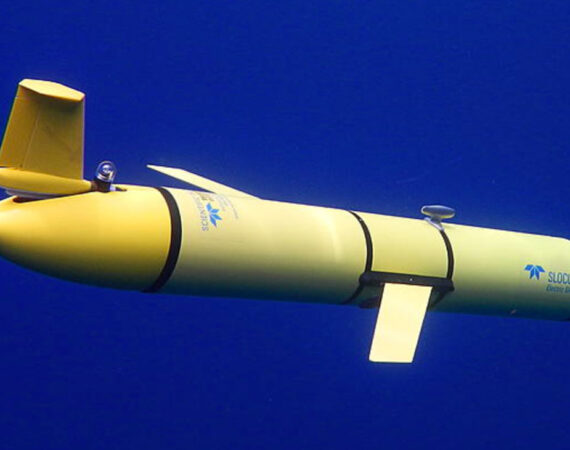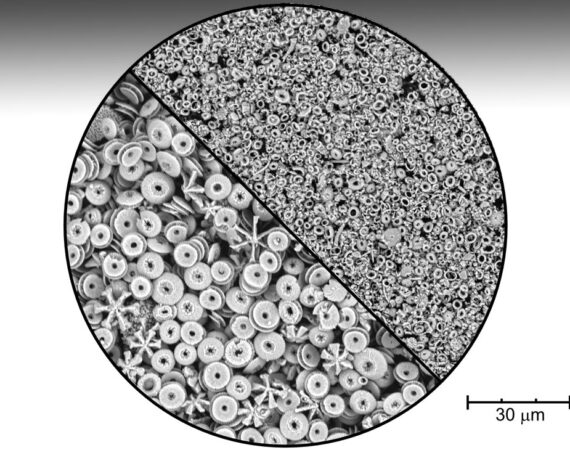Josue, a 5th grader at McKinley Community School in New Brunswick, imagines an alien could evolve and thrive in the harsh elements of Jupiter by harnessing the ability to eat gas. Then, he uses clay to sculpt the creature and names his lifeform “Jomama.” “We asked the kids to show...
The Deployment of Two Drifters from Pacific Gyre
Two drifters from Pacific Gyre were deployed on Friday November 15, 2019. The drifters were deployed as part of a validation experiment for the surface current products that Rutgers produces. The drifters made several loops inside Raritan Bay then made landfall due to the northeast winds that struck the area...
Rutgers researchers set out to prove evolution of all life
NEW BRUNSWICK, N.J. — Using a computer and a protein synthesizer, Josh Mancini builds proteins that are supposed to resemble those that would have existed 4 billion years ago, before life arose on Earth. He places millions of the tiny protein molecules, resembling white powder, into an oxygen-free chamber that...
Ecology and Conservation of Sharks
(above) A tagged male pelagic thresher shark returns to a seamount in the Philippines to be cleaned of parasites. Two cleaner fish (wrasse) can be seen grooming the shark’s flank and cloaca. The acoustic transmitter tag is visible trailing from the dorsal fin, where it was inserted by a diver...
A Busy Week for the RUCOOL Grad Student Field Team
Over the last week, our graduate students got some hands on field work in the mid-Atlantic. On October 25th, Jackie Veatch, Joe Anarumo and Julia Engdahl deployed RU28 for its NJDEP funded water quality testing mission along the NJ coast. This glider mission, deployed by the all-grad-student crew, can be...
Josh Kohut Elected as Vice President of Education for Marine Technology Society
About Josh Josh Kohut, PhD, MTS Fellow, graduated cum laude in 1997 with a B.S. in physics from the College of Charleston and earned his Ph.D. in physical oceanography from Rutgers University in 2002. Since then, he has been a central player in the Rutgers University Center for Ocean Observing...
RUCOOL Celebrates the 500th Glider Deployment
This week, RUCOOL deployed the RU30 glider in support of work by Dr. Grace Saba to study ocean pH in the New York Bight. On board the R/V Rutgers for this deployment out of the Sandy Hook area was the Ocean Methods and Data Analysis undergraduate class. Data from this...
Improving Hurricane Intensity Forecasts Using Ocean Gliders
The need for the improvement of the hurricane intensity forecasts has been recognized by groups within the National Weather Service (NWS) and US Navy. Hurricane forecasting models require accurate ocean and atmosphere initial conditions to better forecast hurricane intensity. One way to improve the initial conditions in operational ocean models...
NJ Universities Launching Sea Robots to Learn About Hurricanes
Underwater robot gliders are measuring air and sea interaction during hurricanes in the mid-Atlantic region. The little yellow submarines are part of a collaborative effort between Rutgers and Monmouth universities. Rutgers marine and coastal sciences expert Travis Miles says these 6-foot long gliders safely collect temperature data. "Ahead of a storm,...
Is Theory on Earth’s Climate in the Last 15 Million Years Wrong?
Rutgers-led study casts doubt on Himalayan rock weathering hypothesis A key theory that attributes the climate evolution of the Earth to the breakdown of Himalayan rocks may not explain the cooling over the past 15 million years, according to a Rutgers-led study. The study in the journal Nature Geoscience could...


